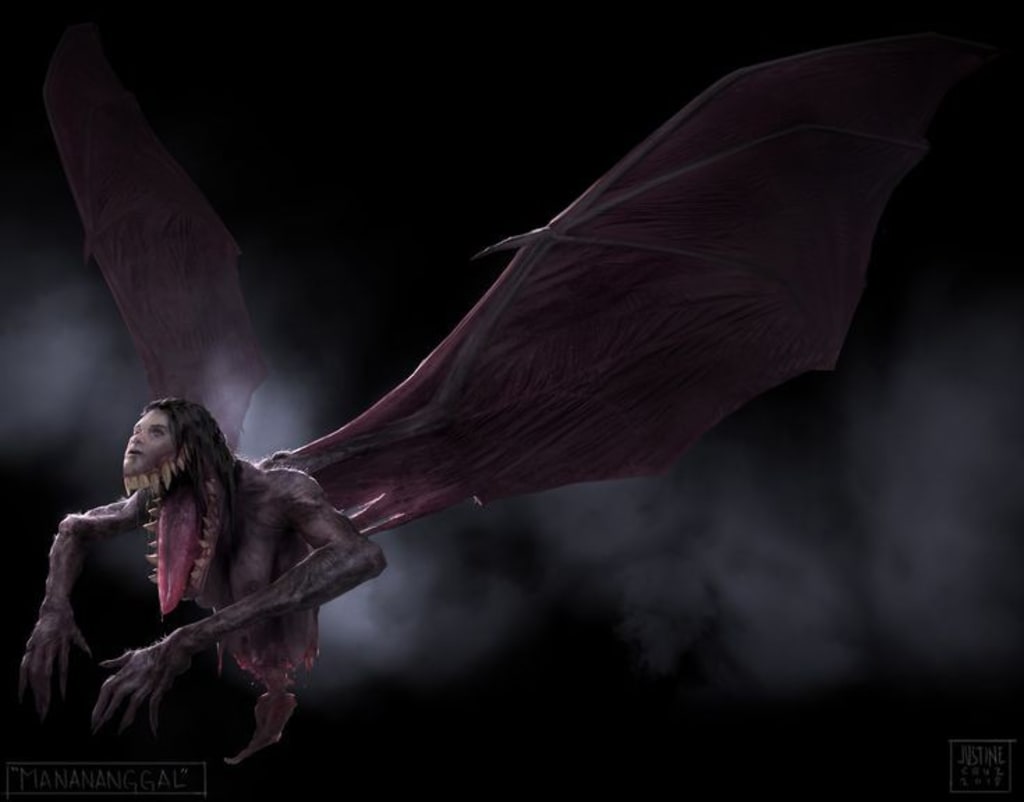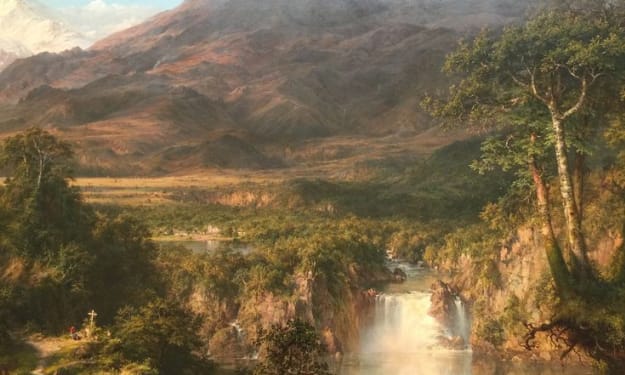
Manananggal Myth
Deep within the rich tapestry of Philippine folklore, the manananggal myth stands as one of the most chilling and captivating tales. Stemming from the annals of Philippine culture, this mythical creature has long fascinated locals and outsiders alike with its distinct lore and bone-chilling characteristics. In this article, we delve into the enigmatic world of the manananggal, exploring its origins, physical attributes, behavior, and its place within Filipino society and popular culture.
The manananggal is believed to have originated from Philippine folklore, with its roots tracing back to pre-colonial times. Described as a monstrous, female creature, it possesses a peculiar ability to detach its upper body from its lower half, which often takes the form of bat-like wings. Its name, "manananggal," is derived from the Filipino phrase "tanggal" (to separate) and "mananang" (one who separates). This mythical being typically appears as an attractive woman during the day but transforms into a terrifying creature of the night.
The manananggal is notorious for its grotesque appearance and gruesome behavior. When the sun sets, the creature detaches its upper body, leaving behind its lower torso, legs, and viscera. With its wings spread, the manananggal embarks on its nocturnal hunt for pregnant women or sleeping individuals. It is said to possess a long, thin, and prehensile tongue that it uses to suck the hearts of fetuses or extract blood from its victims.
As a nocturnal creature, the manananggal typically targets vulnerable individuals or those who live in secluded areas. It emits an eerie, high-pitched sound that sends shivers down the spines of those who hear it. Legend has it that it avoids salt, garlic, and certain plants, making them effective deterrents against its attacks.
Cultural Significance and Popularity (150 words):
The manananggal holds significant cultural significance in the Philippines. It serves as a cautionary tale for pregnant women, instilling fear and emphasizing the importance of protection during pregnancy. The folklore surrounding the manananggal has been passed down through generations, serving as a means to educate and entertain.
In popular culture, the manananggal myth has gained widespread attention and serves as a source of inspiration for literature, films, and artwork. It has become an integral part of Philippine horror folklore and has been featured in various horror movies, novels, and television shows. Its popularity has transcended local borders, capturing the curiosity of individuals worldwide and contributing to the global fascination with supernatural creatures.
The manananggal myth continues to captivate and terrify audiences, offering a glimpse into the rich tapestry of Philippine folklore. Its striking physical attributes, chilling behavior, and cultural significance have firmly cemented its place in the annals of Philippine mythology. Whether viewed as a spine-chilling creature or a cautionary tale, the manananggal serves as a testament to the enduring power of folklore and its ability to both enthrall and educate.
Story:
Manananggal Finds Love
In a small village nestled within the lush jungles of the Philippines, there lived a young woman named Maria. She was known for her beauty, grace, and kind heart, but unbeknownst to the villagers, Maria harbored a secret.
Maria was a manananggal, a creature of Filipino folklore. By day, she lived among the people, blending in seamlessly. However, as the sun set and darkness enveloped the land, her true nature was awakened. Her upper body would detach from her lower body, sprouting enormous bat-like wings and transforming into a fearsome creature.
Despite her monstrous form, Maria remained conflicted. She yearned for acceptance, companionship, and love. One fateful evening, as the moon bathed the village in its ethereal glow, Maria caught the eye of a young man named Miguel. He was captivated by her enchanting beauty and vowed to win her heart.
Miguel's pursuit of Maria was relentless. He composed love songs, brought her flowers, and expressed his unwavering devotion. Maria, torn between her desires and the weight of her secret, hesitated to reciprocate. She feared that revealing her true nature would drive Miguel away, forever dooming her to a life of solitude.
Days turned into weeks, and weeks turned into months. Miguel's love for Maria only grew stronger, despite her continuous resistance. He refused to give up on their love, convinced that there was more to Maria than met the eye. He sensed the turmoil within her and yearned to understand the depths of her heart.
Driven by his determination, Miguel embarked on a journey to uncover the truth behind Maria's mysterious behavior. He sought the guidance of an old healer, who revealed the ancient legend of the manananggal. The healer explained that a manananggal's heart was still human, capable of feeling love and compassion.
Armed with this newfound knowledge, Miguel returned to the village, filled with renewed hope. He sought out Maria, who was contemplating the inevitable separation she would face from the man she loved. When Miguel approached her, his eyes brimming with love and understanding, Maria couldn't bear to keep her secret any longer.
Trembling with fear and vulnerability, Maria revealed her true form to Miguel. Her wings unfurled, and she lifted off the ground, her heart pounding in her chest. To her surprise, Miguel didn't flinch or flee. Instead, he approached her slowly, a gentle smile forming on his face.
"I've known all along," he confessed, his voice filled with warmth. "Your true self doesn't scare me, Maria. It only makes me love you more."
Tears welled up in Maria's eyes as she realized that she had finally found acceptance and love. Miguel's understanding and unwavering devotion touched her heart, easing the burden she had carried for so long.
From that day forward, Maria and Miguel became inseparable. The village came to accept Maria's dual nature, recognizing her as a guardian of the night, watching over them and protecting them from harm. Together, they lived a life filled with love, compassion, and the power to bridge the divide between the human and supernatural realms.
And so, the legend of Maria, the manananggal who found love and acceptance, lived on for generations, a testament to the transformative power of love and understanding in the face of fear and prejudice.





Comments (1)
Please comment your reaction on my written story thank-you.